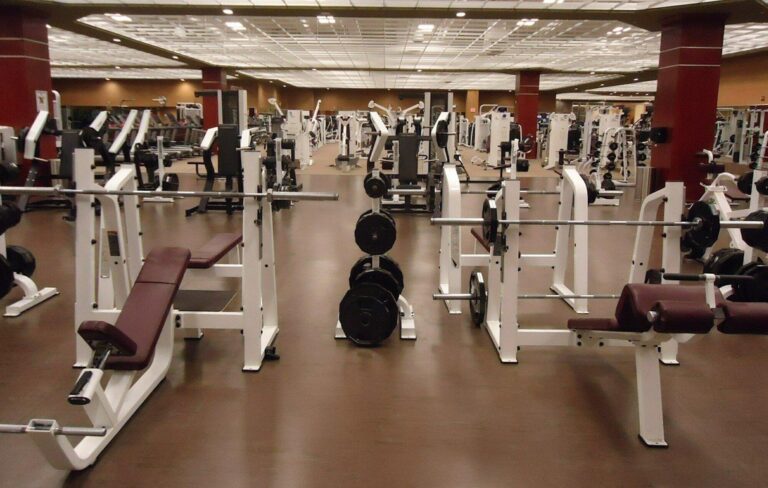Eco-Friendly Moving: Sustainable Practices for a Green Move
Moving can often feel like an eco-nightmare with all the packing materials and fuel emissions involved. Yet, with some forward-thinking strategies, it’s possible to make your move both smooth and green. Planning ahead is more than just setting dates; it involves making mindful choices that drastically cut down on waste, resource usage, and your overall carbon footprint.
By diving into eco-friendly practices, you’ll not only benefit the planet but might also find these methods are kinder on your wallet. This guide compiles thorough research and real-world examples to provide you with solid steps for a greener move. From creating comprehensive inventories to scheduling smarter, you’ll find actionable tips that align perfectly with your values of sustainability.
To ensure an eco-friendly move, consider using used boxes from friends or local businesses, decluttering and donating unwanted items, and opting for biodegradable packing materials. Additionally, choose moving companies that utilize sustainable transportation methods to further reduce your environmental footprint throughout the relocation process, without charging too much.
Planning for an Eco-Friendly Move
When embarking on an eco-friendly move, the first crucial action is to create a detailed inventory of your belongings. This isn’t just about listing items; it’s an opportunity for reflection. By evaluating what you truly need, you begin a natural process of downsizing that directly impacts the amount of packing materials required.
Consider using organizational apps like Sortly or even a classic spreadsheet to keep track of your possessions. This method simplifies your packing process and helps you identify items that may no longer serve a purpose in your life.
After establishing what you own, the next aspect to consider revolves around the timing of your move.
Scheduling and Timing
Choose to move during off-peak seasons—typically from late fall to early spring—when moving services are less busy. This has several benefits: not only do you often find better rates on services, but reduced traffic congestion diminishes fuel consumption and emissions on the roads.
Imagine driving through empty streets rather than battling rush-hour gridlock while maximizing your environmental impact simply by choosing when to move!
With your timeline set, the focus now shifts to how much of what you own will accompany you in this new chapter of your life.
Decluttering
Decluttering is essential for any move, but when aiming for sustainability, it becomes even more critical. Tackle this task systematically by category: start with clothing, then tackle books, kitchen appliances, and so forth. For each item, question its necessity in your life—ask yourself: “Is this something I’ll use or enjoy in my new space?”
The decision-making process isn’t just practical; it’s also liberating. Once you’ve evaluated your possessions, there are several eco-friendly paths forward:
Donating is one of the most impactful choices—find local charities or thrift stores like Goodwill where your items can find new homes instead of piling up in landfills.
Selling is another excellent option; platforms like eBay, Craigslist, or Facebook Marketplace enable circulation among community members who could utilize what you no longer need.
Finally, ensure proper recycling for items like electronics and batteries—don’t just toss them out! Research local recycling programs that accommodate these categories.
As your transition approaches, each deliberate choice echoes beyond immediate convenience and contributes toward a collective effort for sustainability. Preparing for the next steps can make all the difference in creating a greener footprint during your relocation.
Sustainable Packing Practices
Sustainable packing practices not only streamline your move but significantly benefit the environment by reducing waste. One prime choice is to use reusable containers such as sturdy plastic bins or rented crates. These containers are an excellent investment because they can be utilized multiple times, drastically cutting down on the need for single-use cardboard boxes that often end up in landfills. The upfront cost may be slightly higher, but the long-term benefits to both your wallet and the environment are undeniable.
However, reusable containers may not always be accessible or feasible for every move.
This brings us to “second-hand boxes.” Local stores, friends, and even online marketplaces can provide a treasure trove of used boxes. Many businesses will gladly part with their surplus boxes for free or at a minimal cost—saving you money while also minimizing the demand for new packaging materials. This practice helps close the loop on waste, allowing others’ unwanted boxes to serve a new purpose in your moving journey.
As you gather these materials, it’s also essential to think about how you’re protecting your belongings during the move.
Instead of reaching for bubble wrap, consider using clothing, towels, or even old linens as eco-friendly padding. Not only does this method utilize items you already have in your home, but it also cuts down significantly on plastic waste that contributes to environmental degradation. For fragile items particularly prone to breaking during transit, recycled paper or cardboard provides a robust cushioning option that aligns well with sustainable moving practices. These alternatives safeguard your possessions while ensuring that the impact on our planet remains minimal.
Each step towards eco-friendly packing contributes to creating a responsible moving experience.
Adopting sustainable packing practices involves a thoughtful selection of materials that significantly reduce environmental footprints. By prioritizing reusable containers, sourcing second-hand boxes, and employing eco-friendly padding solutions, you’re not only making a smart choice for your move but also actively participating in protecting our planet’s resources.
With each mindful decision you make during relocation, the steps taken pave the way for an even more critical examination of how we can minimize waste in every aspect of our moves.
Reducing Moving Waste
One of the biggest hurdles during a move is not just packing up your belongings, but the inevitable mountain of waste materials that often comes with it. The good news is that you can take proactive steps to minimize this waste and help the environment at the same time. Every action counts; each decision you make along the way contributes to a larger impact.
Pre-Move Sorting
Before even packing your items, it’s vital to embark on pre-move sorting. This process involves organizing possessions into categories: items you want to keep, those you can donate, things suitable for recycling, and any hazardous waste that needs special disposal. By making these distinctions early, you’ll significantly cut down on what you need to transport to your new home. For instance, consider donating old furniture or household appliances still in good condition—many local charities are eager to accept these items.
Community centers and shelters often have designated drop-off points for certain types of waste. If you’re unsure where to take specific materials, look online for nearby e-waste recycling centers that will properly handle electronics or hazardous materials such as chemicals and batteries.
| Item Type | Disposal Method |
| Electronics | E-waste recycling centers |
| Old Clothes | Donation or fabric recycling |
| Batteries | Hazardous waste facilities |
Moving Day Practices
Transitioning into the actual moving day, maintaining an eco-friendly mindset is crucial. One simple yet effective strategy is to eliminate disposable cutlery and plates from your plans. Instead, opt for reusable kitchenware throughout the day. Preparing snacks in reusable containers not only cuts down on waste from single-use items but also comes with benefits like cost savings and less clutter.
To further streamline this process, consider meal planning for moving day. This means prep work ahead of time—perhaps whip up some simple meals and snacks in advance and store them in your favorite reusable containers. Not only does this method reduce food packaging waste, but it also keeps everyone energized and ready for a busy day without the hassle of fast food boxes piling up.
By integrating sustainable practices into your moving activities, you’re taking significant steps toward waste reduction. Each thoughtful decision leads us naturally into exploring responsible travel options that align with eco-friendly living.
Green Transportation Options
The mode of transportation you choose when moving significantly impacts your carbon footprint, and embracing eco-friendly alternatives can lead to a healthier planet. A pivotal choice is selecting fuel-efficient or electric vehicles. This is more than just a trend; it’s a practical solution. For instance, many moving companies now offer electric vehicles as part of their fleet. Companies like Gentle Giant Moving Company have made substantial strides in this area by adopting entirely electric trucks, reducing the emissions associated with traditional gas-powered transport solutions.
Similarly, planning your move with efficiency in mind can yield remarkable benefits. When individuals consolidate their trips by organizing their moving schedule thoughtfully, they decrease the number of journeys and significantly reduce fuel consumption. Imagine cutting down on multiple trips that would otherwise be needed to transport items—this strategy leads to fewer emissions being sent into our atmosphere. It’s a straightforward yet impactful way to contribute positively to the environment while making your moving process smoother.
Furthermore, if you’re coordinating a move with friends or family, consider carpooling. Instead of relying on multiple smaller vehicles that may consume more fuel, renting a larger truck allows all belongings to travel together in one trip. Not only does this method keep emissions low, but it also offers cost savings on fuel and rental fees collectively shared among participants.
Embracing these green transportation options doesn’t just benefit the Earth; it streamlines the logistics of moving while also reinforcing community bonds through collaboration.
As we investigate further into sustainable practices during relocation, understanding how to effectively manage waste will become crucial for minimizing environmental impact.
Responsible Disposal and Recycling

Proper disposal and recycling of unwanted items is crucial in reducing waste and minimizing your environmental footprint during a move. When you leave behind perfectly usable items in a landfill, you not only miss an opportunity to help others but also contribute to the overwhelming volume that fills our landfills. Every small action counts, and there are effective strategies to ensure your discarded items are handled responsibly.
Finding Local Facilities
One of the first steps in responsible disposal is knowing where to take what you no longer need. Resources like Earth911 are invaluable; they provide an extensive database connecting you with local recycling facilities based on your zip code. This platform informs you about where to recycle specific materials like electronics, appliances, or furniture and highlights any special instructions for proper recycling.
Remember, recycling isn’t one-size-fits-all. Different materials have unique requirements, so always check guidelines beforehand.
Composting
If you’re relocating within a short distance, consider composting organic waste instead of tossing it in the trash. Composting transforms kitchen scraps—like vegetable peels and fruit cores—and yard waste—like grass clippings and fallen leaves—into nutrient-rich soil conditioner. This process reduces methane emissions from landfills while enhancing the health of your garden.
The beauty of composting is that it allows you to repurpose what would have been waste, creating something beneficial from it. Incorporating compostable paper products into your pile can also add valuable carbon content.
Community Give-Back
Engaging with community programs is another excellent avenue for responsible disposal. Platforms like Freecycle allow individuals to give away items they no longer need, ensuring these items find new homes rather than ending up as garbage. Joining local buy-nothing groups on social media can further extend this concept. Not only does this practice foster community connections, but it also encourages a culture of sharing and reuse.
Imagine someone finding use for your old couch or gently worn clothes instead of them heading to the landfill—that’s sustainability at work!
By linking with community resources and adopting practices such as composting and proper recycling, you can profoundly impact the environment positively while preparing for your move. Each step ensures a greener transition for both you and the planet.
As you navigate through these eco-friendly practices, considering companies dedicated to sustainability will further enhance your efforts toward a greener relocation experience.
Eco-Friendly Moving Companies
When you choose a moving company that prioritizes green initiatives, you’re not only making your transition smoother but also supporting sustainable practices. These companies take responsibility for their environmental impact and employ strategies that reflect commitment to protecting our planet. It’s essential to consider the long-term effects of your choices, which extends to how you manage your move.
Features To Look For
As you evaluate potential moving companies, be sure to identify key features that indicate their eco-friendliness. For instance, ask if they utilize biodiesel or other alternative fuels for their vehicles. This can dramatically reduce emissions compared to traditional gasoline-powered trucks.
Additionally, reusable packing materials should be on your list; companies that provide these options minimize waste while ensuring your items are transported safely. An established environmental policy indicates a company’s dedication to sustainability and often points toward its involvement in broader community efforts.
Understanding just how committed a company is to eco-friendly practices can often be reflected in their operational choices.
Recommended Companies
If you’re looking for trustworthy eco-friendly moving companies with proven track records, several stand out as excellent choices:
Cool Hand Movers has gained popularity by offering reusable bins which customers can rent instead of buying boxes. They supply environmentally safe packing materials, ensuring that everything is safe for both your belongings and the environment.
Then there’s Eco Movers, who prioritize sustainability by using trucks powered by eco-friendly fuel and recycled packing materials that reduce landfill contribution. Their model serves as a great example of how business operations can align with environmental responsibilities.
Finally, consider Gentle Giant Moving Company, known for its innovative approach: employing electric vehicles and installing solar panels across its facilities. By investing in clean energy solutions, they contribute to a greener planet while facilitating efficient relocations.
Choosing one of these companies means you’re not only making a smart logistical decision but also advocating for sustainable practices in the industry.
In a time when environmental concerns are paramount, selecting the right moving company is crucial for leaving a lighter footprint on our planet. Such decisions not only reflect our values but also set the stage for our future actions as we navigate new beginnings.
Final Tips for a Green Relocation

The completion of your move is not just about unpacking; it’s also an opportunity to reinforce your commitment to sustainability.
One immediate step you can take is to ensure that all packing materials are dealt with responsibly. After moving, flatten any used boxes and recycle them, along with any plastic or paper packaging that accompanied your items. However, keep a few boxes for future use or consider participating in local community sharing programs where others can benefit from what you no longer need. This small act can keep those materials out of landfills while contributing to a cycle of reuse.
As you settle into your new space, be mindful of the products you choose.
Pre-Purchase Green Supplies
Before you dive into cleaning and setting up, think about stocking your home with eco-friendly cleaning supplies. Choosing non-toxic, biodegradable products reduces harmful chemicals from entering your living space.
Additionally, consider sustainable unpacking methods. For instance, using items like towels or reusable cloth bags instead of single-use plastic can help maintain your eco-conscious approach during the unpacking process. Starting off with a commitment to sustainability sets the tone for how you will continue to live in your new home.
Once you’ve established your eco-friendly practices, there’s a great opportunity to share them with the world.
Sharing the Journey
Don’t underestimate the power of storytelling; sharing your eco-friendly moving journey can inspire others to adopt similar practices.
Take a moment to post about your experience on social media or contribute to community blogs, detailing the sustainable methods you used during your move. This reflects not only your commitment but also highlights practical solutions that friends and family might embrace in their relocations. Your insights and stories could spark conversations or even lead others on their own paths toward greener living; after all, each sustainable action contributes to a larger impact on our environment.
By following these final tips for a green relocation, you’re not merely moving into a new space; you’re establishing habits that honor both your lifestyle choices and the planet we share.
Sustainability is not just a one-time effort but a lifelong commitment that begins with small yet impactful choices during your move. Embrace this journey as an opportunity to inspire others while fostering a green living environment for yourself and those around you.







